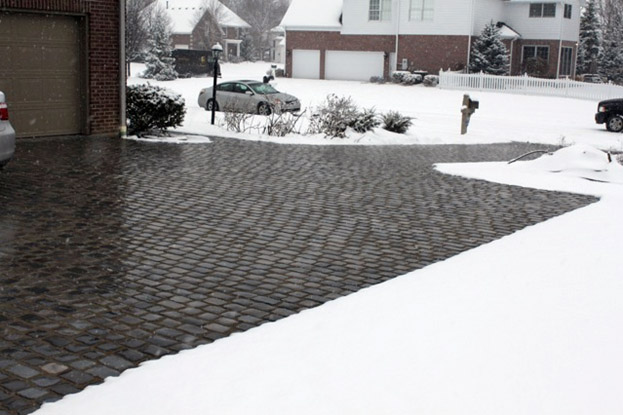What NOT to do When Installing Radiant Heat – Tips and Advice from the Pros
Radiant heat is a proven technology that produces impressive results. But like most products, if the system components aren’t installed correctly, the radiant heat system can’t perform as intended, and the customer is left frustrated and disappointed. Despite the advanced technology involved, installing a radiant heat system is not difficult, but there are some key guidelines to follow to ensure that the system performs as intended. While consumers can buy the best snow melting system components from ProLine Radiant, unless they’re installed correctly the system won’t produce the results you’re expecting.
ProLine is a proven and trusted wholesale radiant heat provider offering snow melting, roof deicing, pipe trace and floor heating solutions. But ProLine isn’t content to simply carry the industry’s premier radiant heat products. ProLine has broken away from the pack by offering and following through with the best customer service in the industry.
ProLine Radiant has built its success upon the industry’s most preeminent customer services. Because proper installation of radiant heat systems is vital, ProLine not only includes installation support services, but offers free installation training courses. Installers can attend via WebX or in person at ProLine’s headquarters. Complete system layout and design AutoCADs with specs are also available, so customers will know proper layout and materials, load calculations, breaker sizes, number of breakers, and other technical aspects of the installation prior to any heat cable being installed. It’s this attention to quality customer service that distinguishes ProLine from the competition, and helps to ensure that each system installed performs as intended.

In addition to the personal service and support, ProLine continually posts information and tips for installing radiant heat systems. Top quality products are only part of the complete radiant heat solution. “Our product line has proven itself,” stated Brandon Weaver, Director of National Sales for ProLine. “But it’s vital that installers follow a few simple guidelines to install these systems correctly, so that customers can enjoy the full benefit of our premier products. It’s helpful to read the information we post online, and never hesitate to call our tech support team if you have questions during the installation.”
Some of the most common installation mistakes include:
- IMPROPER CABLE SPACING. Take the time necessary to layout and then inspect the heat cable to ensure that it’s spaced properly. Follow the basic cable spacing rules: Keep the cable at a minimum spacing of 2 inches and a maximum of 4 inches (center-to-center).
- IMPROPER CABLE DEPTH. Don’t let the heat cable rest on the ground before a concrete pour. Use Mesh-Ups to elevate the cable so that it remains in the center of the slab with the remesh. (Mesh-Ups are plastic support ‘chairs’ that are valuable, yet extremely affordable and they can make all the difference in the world between a successful and an unsuccessful installation.) Mesh-Ups keep the heat cable that is secured to the remesh elevated from resting on the ground as the concrete is poured. It’s a simple, affordable solution to keep the heat cable at the ideal distance from the concrete’s surface, thereby resulting in optimum snow melting performance.
- NEGLECTED WARRANTY CARD. Too many installers neglect to fill out the warranty card and mail it to the manufacturer. Don’t let this happen.
- FORGETTING TO TEST THE CABLE. Do not forget to test the cable during all phases of the installation. Start by testing the cable out of the box and then throughout each aspect of the installation.
- COMPROMISED HEAT CABLE. Never cut or damage the heat cable. If you must use steel rakes and shovels, take extreme caution when using these tools during the concrete pour to avoid damaging the heat cable.
One way to limit mistakes during an installation is not only to avoid the above errors, but to follow the handy checklist below:
Pre-installation Checklist
Before buying and installing a radiant heat system, review the checklist below.
- Verify the correct voltage of the home or business where the system is being installed (220/240 or 110/120).
- Verify the available amperage. Do not guess or assume. Because of the importance of this information, we recommend having an electrician come to your location to measure the amperage.
- Hire a trusted electrician, preferably one you’ve worked with before. Let’s face it, not everyone is competent or ethical, so find one who has been in business for several years. Ask around and talk with those who have personal experience with electricians.
- Keep in mind that the National Electric Code (NEC) requires that the system has 30mA GFEP (30mA trip protection).
After installing your radiant heat system, fill out and mail your warranty card.
Perhaps the most overlooked tip – and one that can eliminate installation mistakes and unhappy customers – is to take advantage of the free training! Call 801.948.7577 or 866.676.9276 to sign up or learn more.
